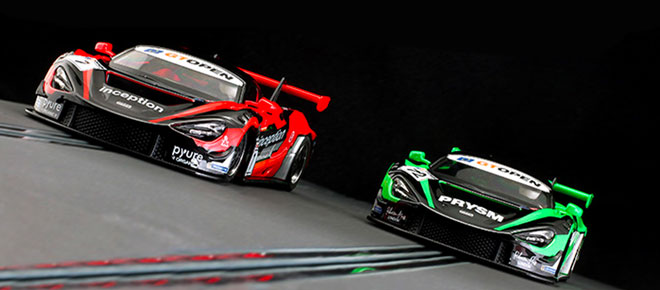Top 4 VR Headset Trending in 2024

If you’re thinking about getting a VR headset, the options are overwhelming. Some are standalone, requiring nothing more than your phone and some games. Others require a Link cable or gaming PC.
The Meta Quest 2 is the most advanced all-in-one VR system yet – no game console or PC needed. It comes with a library of immersive experiences and a comfortable fit.
Meta Quest 2
Unlike the Oculus Quest, which relies on a gaming PC or console to power its display and controllers, Meta Quest 2 is a standalone headset with everything it needs built-in. This makes it an appealing option for people who don't want to buy a new computer or games console just for VR, but still want the experience of playing a wide range of games and applications that are available on the platform.
The Quest 2 is the second generation of Meta's standalone headset, and it looks much like its predecessor but with a few tweaks to improve its performance and comfort. Most notably, it's lighter and more compact than most other headsets, and the area that touches your face is covered with a soft material to reduce the discomfort you can get from long play sessions. It's also one of the fastest headsets to set up, with Inside-Out tracking and hand tracking built in, so you can go from unboxing to up and running in minutes.
Its resolution of 3664 x 1920 per eye might not seem impressive compared to headsets that can utilize gaming PC power, but it's more than enough for a standalone. The 100-degree field of view (FOV) is as good as you can get for a headset that doesn't require a screen on your phone or a separate display.
Scherma found that wearing the Quest 2 wasn't uncomfortable, but he wouldn't wear it for hours at a time. "My nose and cheeks did get a bit dry after a while, but that's to be expected with any VR headset," he says. He did note that the Quest 2 has an attachment that's supposed to make it easier for people with glasses to wear, but he didn't find that to be the case in his testing.
The Meta Quest 2's primary focus is gaming, but it's got a variety of other experiences as well, including social-based ones such as Rec Room, fitness apps, and video content from YouTube VR and Oculus TV. Consider checking for Best Buy Coupons to potentially save on the purchase of the Meta Quest 2 or other electronic devices.
Sony PlayStation VR
The PlayStation VR is an excellent entry point for anyone who doesn’t want to shell out the money for a high-end rig and still wants a great VR experience. It’s a cabled headset that requires a PS4 or 5 to work, and it’s been recently updated with a new processor unit capable of handling HDR content, which will make your games, movies, and TV shows look even better.
Whether you’re a first-timer to virtual reality or an experienced user, the PSVR is a comfortable and easy-to-use headset. It features a light and flexible headband that fits snugly on your forehead, and the headset’s lenses are adjustable so you can focus them as needed. It also has a built-in microphone for video chat, and it can stream audio from your PS5 console or an external Bluetooth device. It has a dedicated passthrough button on the bottom of the headset that lets you check your surroundings, and it can display phone notifications, so you don’t need to remove and readjust the headset every time you get a text or call.
What makes the PlayStation VR even better than other headsets in its price range is that it has a gorgeous OLED display that reproduces rich colors and has enough pixel density to create massive natural landscapes (or dino robots) all around you. Its 110o field of view (FOV) is also far more impressive than the 89o offered by the Meta Quest 2 and many other headsets in this price range.
The only thing that sets this headset a bit behind is that it uses Fresnel lenses instead of the more modern pancake ones used by HTC, Meta, and Pico. Pancake lenses are smaller and lighter and create a larger visual “sweet spot” than the older Fresnel style. That may sound like a small detail, but it’s a sign that the PSVR2 is a few years behind the curve.
HP Reverb G2
When it comes to PC VR headsets, the big names in the space are HTC and Valve. The latter’s Vive Cosmos and Index headsets have a hold on the PC-based headset market, while Facebook/Meta (or whatever they’re called now) has captured the casual entry-level crowd with its stand-alone Quest headsets. But HP has quietly been making a good name for itself with its Reverb G2 headset, which features class-leading resolution and solid tracking at a relatively reasonable price of $600.
The Reverb G2 uses an inside-out tracking system, which eliminates the need for external sensor stations like those found on the Vive Cosmos and Index headsets. Instead, the Reverb G2 uses its four onboard cameras to track your movements. That’s a big advantage for consumers who want to avoid the hassle of setting up sensors. But the headset’s camera system still has some issues. For example, trying to move your head close to your face confuses the sensors, and moving your feet around also seems to cause tracking problems.
Other than the cameras, the Reverb G2 is a pretty solid headset. Its 2,160 x 2160 per-eye displays provide a level of visual fidelity that surpasses the field of view and resolution on both the Vive Cosmos and Valve Index headsets. The visible screen door is virtually non-existent, which helps to make the Reverb G2 a very immersive experience.
The headset can run at a maximum refresh rate of 90Hz, which is plenty fast for most users to avoid nausea when playing VR games. The Reverb G2 also has a built-in slider that lets you adjust your interpupillary distance, which is great for people who have trouble seeing small details in VR headsets with fixed IPD settings.
While the Reverb G2 is a solid headset for PC gamers looking for an affordable way to get into virtual reality, it’s not as well suited for simulation gaming as the more expensive options from HTC and Valve. The lack of external sensors can sometimes lead to tracking difficulties when playing some games, and the Reverb G2’s 720p monitor can make it difficult to see detail in bright scenes. Check for Electronics Coupons to potentially save on the purchase of the Reverb G2 or other electronic devices.
Valve Index
The VR headsets we use with our computers, phones, and game consoles keep changing and expanding. 2024 looks to be another big year in this space. We'll see more high-resolution, more comfortable headsets and a growing focus on enterprise-grade models.
We'll also see more headsets that let you walk around your play space. These augmented reality headsets will combine VR with video of the real world. It's a technology that's not quite ready for mainstream adoption but could become more common in the future.
In addition to the new headsets that will be available this year, you'll also see more of the existing hardware get upgraded with improved features. The HTC Vive Flow, for example, will have a faster processor, better graphics, and a lighter frame. These improvements will make it more comfortable to wear for long periods and give it a performance edge over competing headsets.
Apple will launch its high-end mixed-reality headset, the Vision Pro, this year. This device will have a pair of 4K-in-each-eye displays and is expected to be the highest-resolution headset on the market when it launches. Apple's strength has always been taking cutting-edge tech and refining it to be user-friendly, and we expect the same when it comes to this new device.
The HP Reverb G2 is one of the most comfortable VR headsets on the market. It has superb tracking and a stunning 4896 x 2448 display, but it's not the easiest to set up. That said, it is still a great option for anyone who wants to enjoy a premium VR experience without breaking the bank.
For PC gamers, the Valve Index is an excellent option. It's a premium headset that delivers an outstanding VR experience, featuring finger-tracking controllers, a high refresh rate, and access to SteamVR's vast library of games. It's also one of the most accurate VR headsets in terms of visual clarity, thanks to its dual 1440 x 1600 RGB LCD screens that feature 50% more subpixels than OLED, significantly reducing the screen door effect. It can run at up to 144Hz in experimental mode, giving it the best visual clarity of any mainstream VR headset on the market.
Conclusion
The VR headset industry is expected to see significant growth and innovation in the next few years. The top trends in 2024 will likely include increased focus on comfort and ergonomics, expanded capabilities such as eye-tracking and haptic feedback, advancements in wireless technology and connectivity, and greater integration with other emerging technologies such as AI and AR. Overall, the future of VR looks exciting and full of potential for both consumers and businesses alike.






